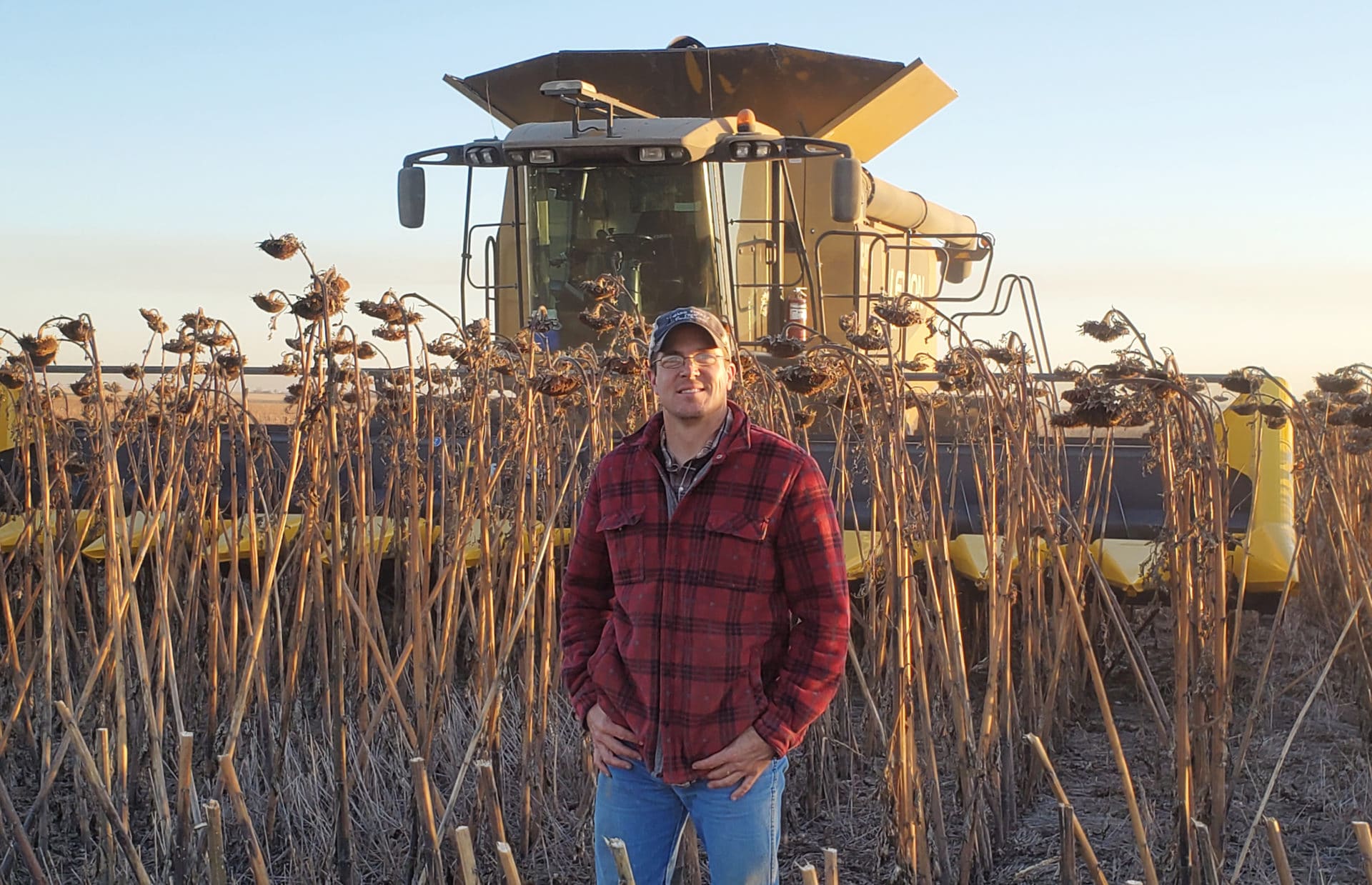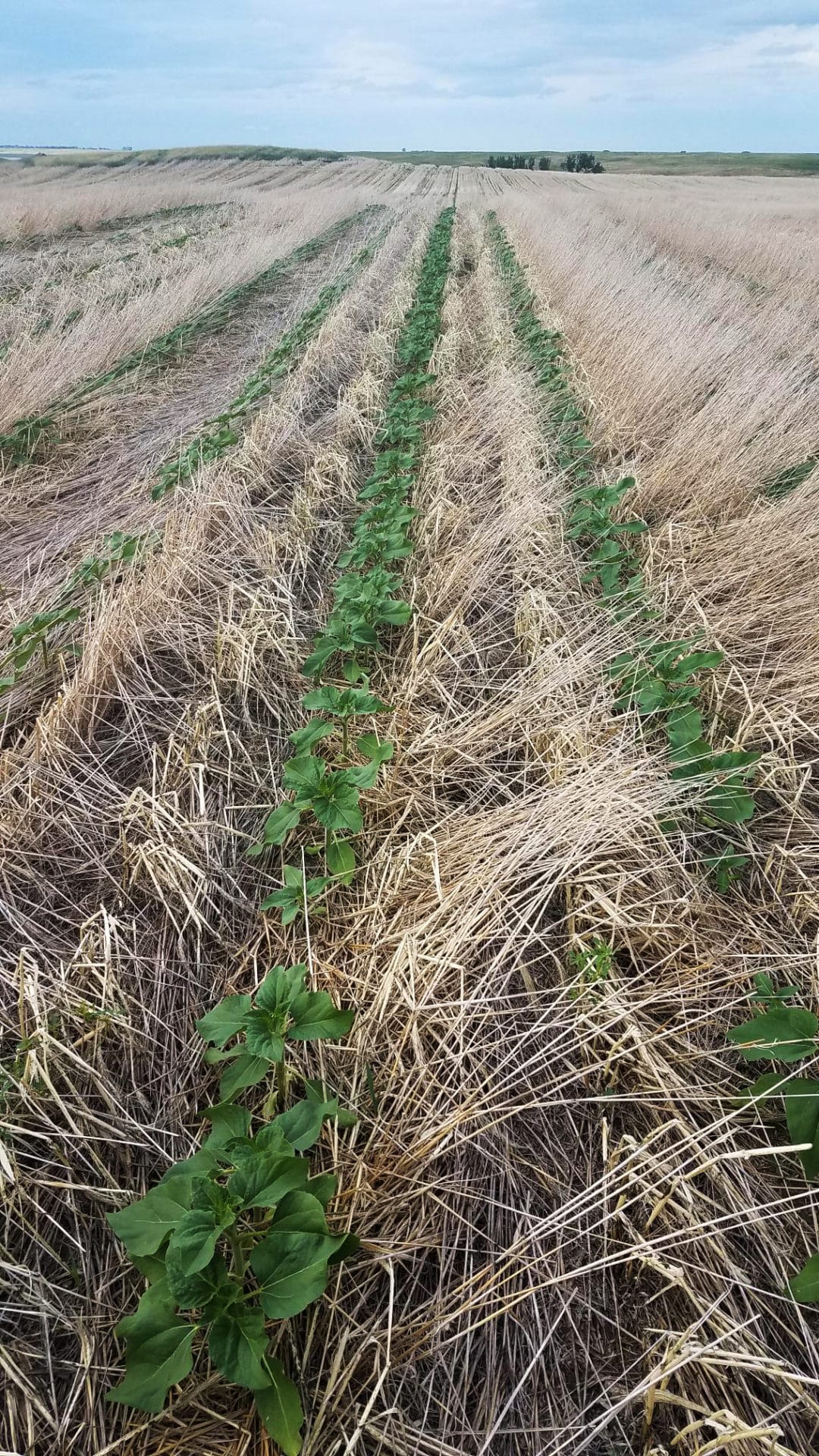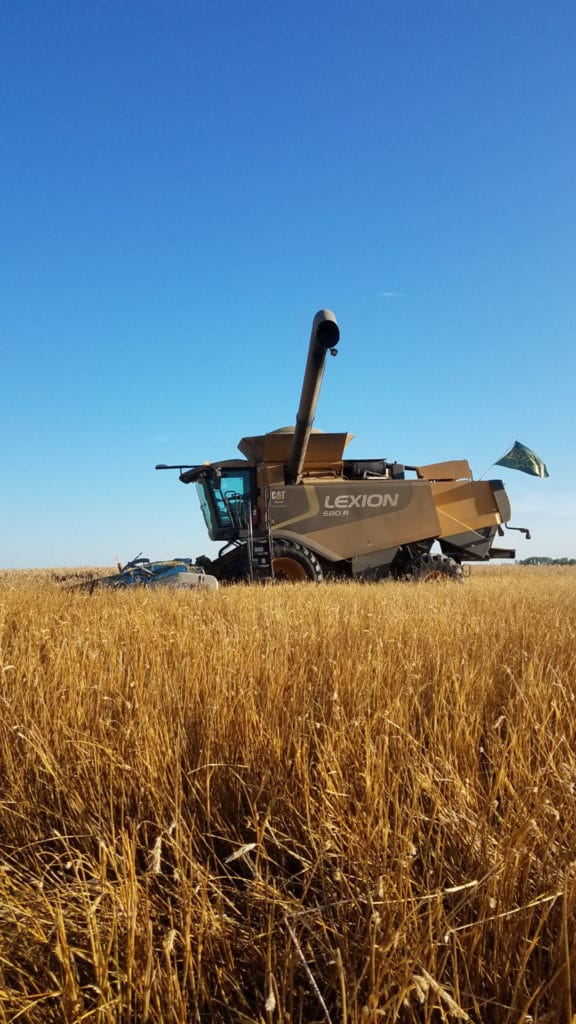Miracles Change as Regenerative Journey Continues for SHA Graduate
When we visited with Brandon Bock last year, his regenerative journey had just begun. He shared a story about how his desire to farm in nature’s image had run head-first into his prescriptive, conventional farming mindset.
As grasshoppers swarmed his spring wheat crop, he recounted kneeling in his field, praying for a divine signal that would tell him NOT to spray insecticide. He promptly received that signal in the form of a large flock of grasshopper-consuming seagulls. The resulting lesson for Brandon was not just one of faith but also of the inner connectivity between biology and farming.
A year later, Brandon’s regenerative journey continues. Though less dramatic than a flying miracle from above, other miracles abound on his North Dakota farm, thanks to his on-going application of soil health-improving regenerative agricultural principles. Despite experiencing D-3-level drought conditions this year (and well-below average precipitation for the past three growing seasons), Brandon has created an environment below ground that is translating into other miracles above ground.

As he builds soil health through the use of regenerative agricultural principles, Brandon Bock continues to see improvements in his North Dakota farming operation. “Whether it’s through the diversity of cover crops, cash crops, and even insects. Keeping life on our fields is the key,” he says.
In a recent conversation, he shared some of the lessons he’s learned on his regenerative journey to date, and how the continued application of the Six Principles of Soil Health is having a positive impact on the land, his quality of life and his bottom line. Following are three key lessons he’s learned and the impact each has had on his regenerative farming journey.

“Planting soybeans and rolling down previous years cereal rye stubble. It was 85 degrees with a 30-40mph wind this day, but no soil blowing. Barley, sweet clover, radish cover is also present from the past fall. The green residue was volunteer rye that overwintered providing a living root all spring.” – Brandon Bock
Three key lessons on Brendon’s road to regeneration
#1 The importance of the Haney Soil Test
“Once we get life back into our soils, we have to account for that, and the Haney Test allows us to do that.”
With Lance Gunderson’s recommendations, Brandon applied 50-80 percent less nitrogen to his crops this year, compared to his previous fertility program—resulting in very competitive yields for the farm’s drought conditions. “That’s really encouraging going forward, especially with the prospect of record-high fertilizer prices next year,” Brandon says.
Brandon credits the combination of cover crops and a diverse cropping rotation with enabling the biology that’s responsible for the naturally available nutrients. “Right now, I’m at six cash crops in my rotation, compared to just three before and we’re incorporating cover crops where we can, as time and weather allow,” he says.
#2 The importance of keeping life on the fields
“Whether it’s through the diversity of cover crops, cash crops, and even insects. Keeping life on our fields is the key.”
The diversity of plant life not only enables soil microbiology to deliver nutrients to the plants, but it also provides habitat for life above ground. “Far too many people view every insect as a problem. In reality there are far more beneficial insects. We as producers just need to change the way we see things. Just open your eyes to what is functioning properly.”
While non-beneficial insects have caused some concerns, Brandon believes nature will ultimately restore the farm’s ecosystem balance, obviating the need for insecticides. “We’ve had some insect pressure but mostly on the field borders so the acreage loss wasn’t significant, and I feel that in the long term that will balance out,” he says. “The transition takes time, but we knew that going into this.”
#3 The importance of armoring the soil
“Even in these drought conditions, some of my lightest land still had moisture available. This was after raising a rye cover crop through the fall, winter, and into the spring.”
By using Shelbourne Reynolds stripper headers during harvest, Brandon has been able to armor the soil more effectively by leaving wheat residue standing, thereby reducing on-ground decay, and providing the soil with extended protection from wind, heat, and evaporation. It also provides natural weed suppression (resulting in Brandon writing fewer and smaller checks for herbicides) and better conditions for his no-till equipment.
“I realize that equipment purchases aren’t always easy, but it can make a huge difference in armoring your soil,” he says. “While planting and rolling on an 85-degree day, in a D-3 drought with a 40 mile-per-hour wind, we had zero soil blowing. Farming conventionally, you wouldn’t have been able to see where you were going. The list of benefits from armoring your soil are endless.”
Cascading and Compounding Benefits
Looking back, Brandon recognizes the conventional ag production model he followed provided a lot of stress and little joy in his life. “When I first started farming, I did it to make money. I tried to raise as much yield as possible without truly understanding the side effects of my actions.”
Freedom from worries about the rising costs of inputs is another benefit of regenerative farming for Brandon. “Now if the price of fertilizer or herbicide goes up, I say, ‘Who cares? We don’t need as much of it. We can adapt to less.’”
This year’s drought challenges notwithstanding, Brandon states that his operation, which includes rented land from multiple landowners, is more profitable than it would have been if managed conventionally. “Cutting back on inputs, in particular, has put us in a better financial place than if we hadn’t gone down this path,” he says.
“In the old model, we were constantly working harder and harder, spraying more and getting the same or less net revenue,” Brandon says. “Through this journey, I’ve learned to take care of the soil first and worry about the money later.”

“This photo shows sunflowers growing in last years stripped off winter wheat stubble. You can also see last fall’s barley, sweet clover and radish cover residue.” – Brandon Bock

“The Shelbourne-Reynolds stripper header has allowed us to catch more snow, shade and protect the soil, provide natural weed control, keep soil temps down, speed harvest and allow easier seeding with a single disc no-till drill or planter.” – Brandon Bock
